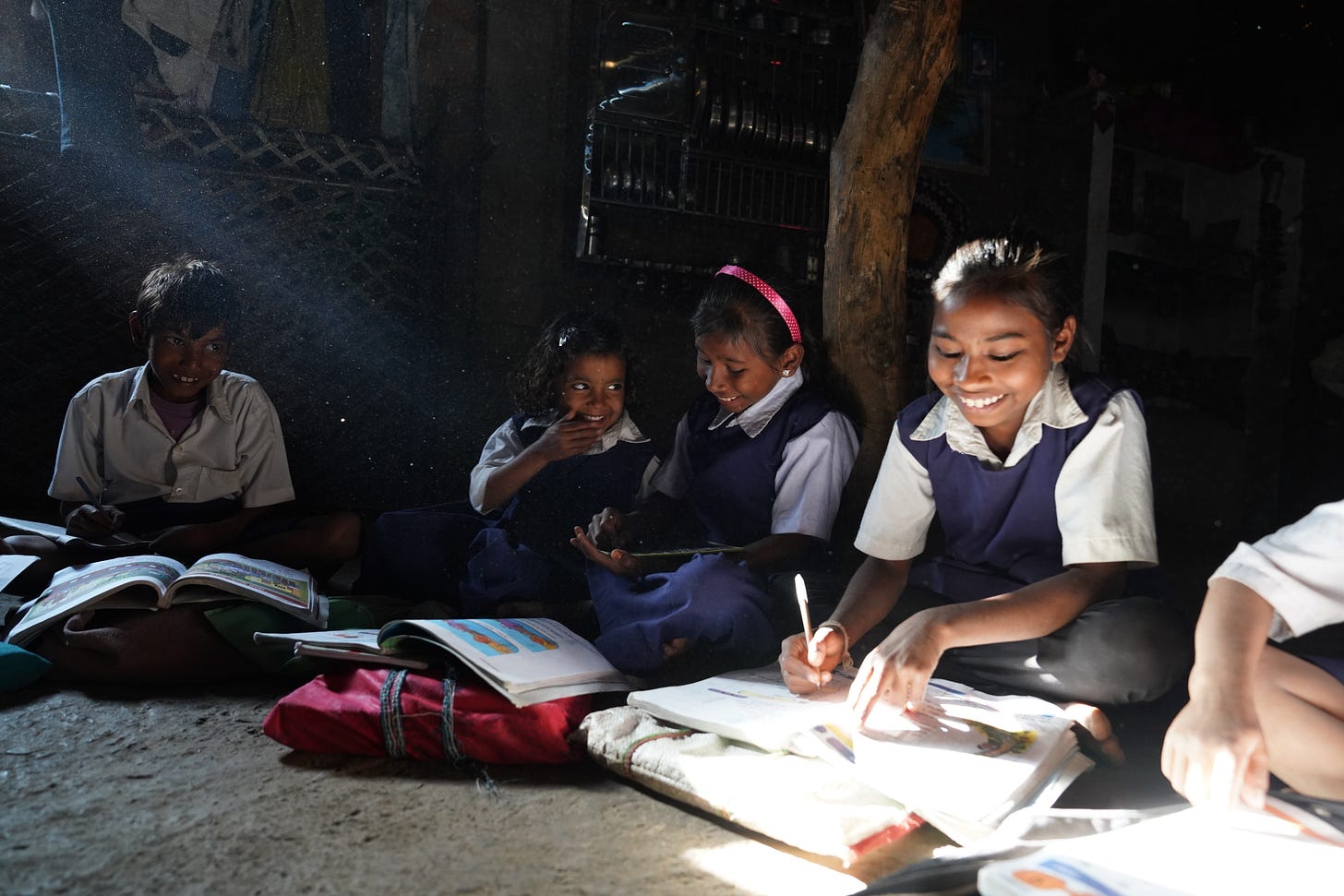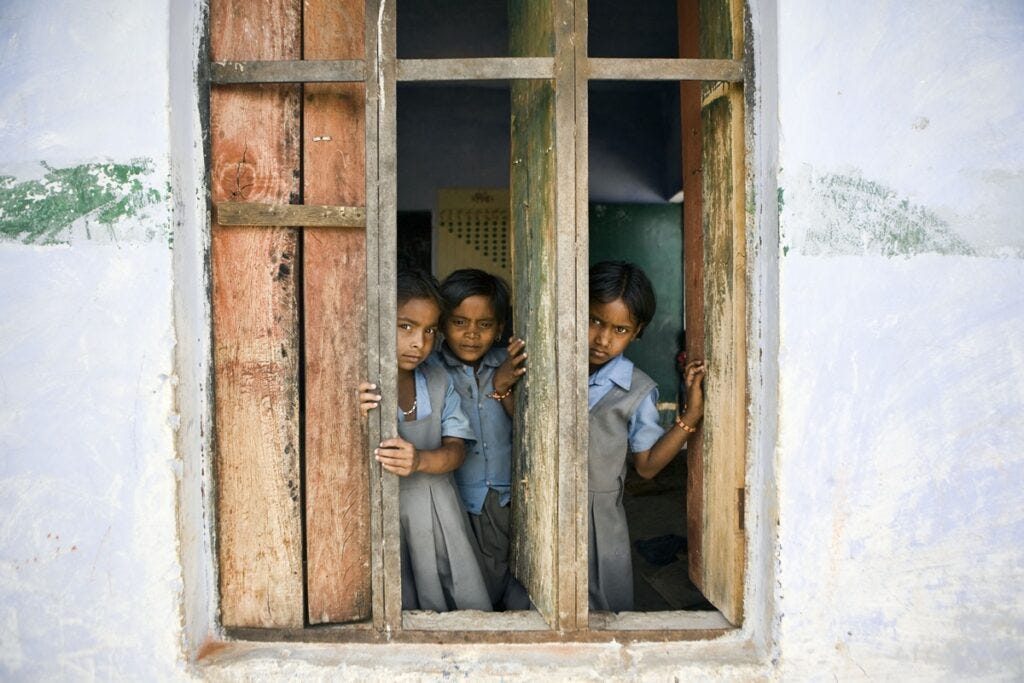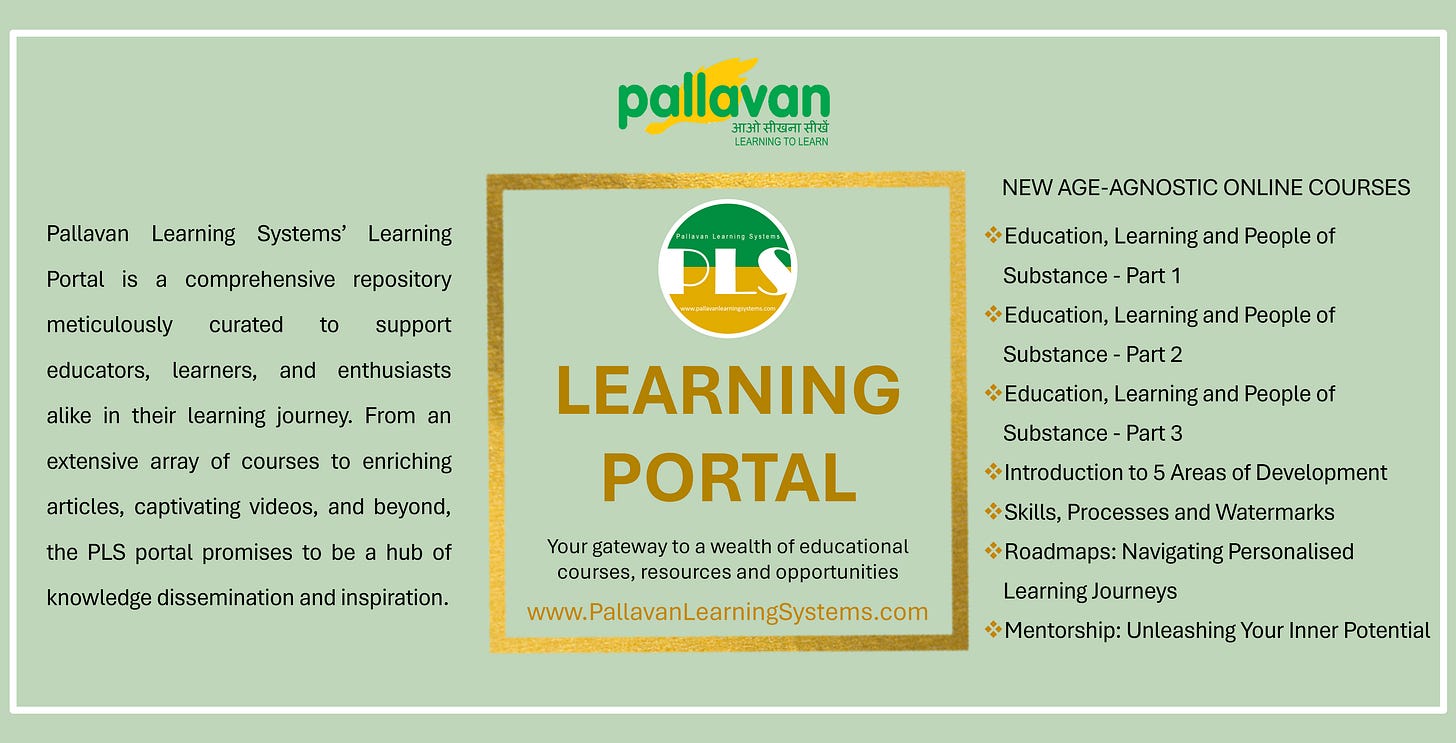We hope this message finds you well. We are reaching out to you since you have been a part of our programmes. It has been a delight to share ideas and insights with you during our events and webinars. If you wish to subscribe to our newsletter and get regular updates, please subscribe to our Substack.
Here is our latest edition for your information.
Editor’s Note:
Dear Reader,
As we close out another year, this issue invites us to reflect deeply on a critical challenge facing our society: the empowerment of women through education, opportunity, and safety. Despite strides in female literacy and governmental initiatives like the RTE Act and Beti Bachao, Beti Padhao, stark realities persist—especially in rural areas. Girls continue to face systemic barriers, from societal biases and economic constraints to safety concerns that restrict their educational and career aspirations.
The disparity isn't just in access to primary education; it extends to higher education and workforce participation. Social norms often deter families from investing in girls' futures or supporting their professional ambitions. Safety concerns—both real and perceived—further limit their opportunities, as does the expectation to prioritise family responsibilities over careers. These challenges underscore an urgent need for a more comprehensive approach that goes beyond policy and addresses deep-rooted societal attitudes.
Education remains our most powerful tool for change. But it's not just about access to schools or degrees—it's about reshaping mindsets. By fostering an environment of gender equality from an early age, educating both girls and boys about mutual respect and opportunity, and creating safe spaces for learning and working, we can unlock the full potential of our daughters and sisters.
This month's articles remind us that true empowerment doesn't mean giving women a leg up—it means removing the barriers that hold them back. Our role, as educators, parents, and members of society, is to provide opportunities and ensure safety, allowing every woman to thrive on her own terms. Together, let's commit to building a future where our daughters' dreams aren't limited by geography, tradition, or fear.
Opening Doors for Women: Education, Opportunity, and Safety
by Mahtab Alam Siddiqui
Despite notable progress in female literacy, the gender gap in education remains a significant concern. As of 2022, only 70.3% of women in India were literate, highlighting systemic challenges that hinder their educational attainment, especially in rural areas. These challenges include the lack of proper schools in the catchment area of girls, deeply ingrained societal norms that deprioritise female education, and economic constraints that lead families to prioritise boys' education. Although initiatives like Beti Bachao, Beti Padhao have increased awareness and access, the projected female literacy rate of 73–75% by 2025 underscores the need for sustained, focused efforts to ensure equitable educational access and outcomes.
This issue is serious in a situation where the government has been implementing the RTE Act since April 1, 2010, mandating that every Indian must receive elementary education and requiring private schools to reserve 25 per cent of their seats for the underprivileged category. However, my experience of working with both government and private schools reveals a different story. People in rural areas send their sons to private schools and their daughters to government schools as they do not want to invest much in girls' education. This bias affects the possibility of higher quality education for girls.
Gender Bias in Rural Indian Education: Breaking the Barriers
by Sunaina Narang
Gender bias in education remains a critical issue in rural India, where patriarchal traditions, economic pressures, and social attitudes have shaped the roles and opportunities available to girls and boys differently. While significant strides have been made in expanding educational access across the country, the gap in educational equity is still glaring in rural areas, with girls and women bearing the brunt of this imbalance. This article explores the persistence of gender bias in rural education, its causes, and the ways in which it impacts the future of girls and women in India.
The Current State of Education for Girls in Rural India
India’s rural education system has expanded in recent years, particularly due to government initiatives like the Sarva Shiksha Abhiyan (SSA), Right to Education Act, and Beti Bachao Beti Padhao. These initiatives have helped to increase enrolment rates, but the gender disparity in access, attendance, and completion of education remains pronounced. According to recent data, while nearly 96% of children aged 6–14 are enrolled in school, rural areas witness a significant drop in enrolment rates for girls as they progress into secondary and higher education.
In many rural districts, societal norms and economic hardships discourage families from investing in girls’ education. Girls are often viewed as an economic liability due to dowries, while boys are seen as future breadwinners who will support the family. These perceptions lead to prioritisation of boys’ education, with girls often expected to help with household chores or family businesses rather than attend school.
Understanding Gender Inequality in Indian Education
Courtesy: CRY
Education is a fundamental right that provides children with the foundation to build secure futures. However, gender inequality in education continues to be a significant barrier for many children.
Even though the Right to Education Act 2009 promised free and compulsory education for children up to age 14, many girls still can’t reach higher secondary school. According to GER, UDISE 2021-22, only 3 out of 5 girls in India are enrolled in higher secondary education. Household responsibilities, child marriage, societal norms, etc are some of the factors that restrict girls from accessing learning opportunities that could transform their lives.
Addressing these disparities requires a collective approach considering cultural, economic, and infrastructural challenges. Creating a balanced educational system can promote growth and equality for all children and empower them to reach their full potential. Keep reading
Unveiling The Imbalance: Gender Disparity In Education In India
Courtesy: Academike
No society has ever liberated itself economically, politically, or socially without a sound base of educated women. Gender inequality in education remains a pressing issue in India, despite significant progress in recent years. This article provides a comprehensive analysis of the factors contributing to gender disparities in education in India, as well as potential suggestions to address these challenges. Drawing on data from government reports the article examines the root causes of gender inequality in education, including cultural norms, socioeconomic factors, and systemic barriers. It explores the impact of gender disparities on access to education, learning outcomes, and future opportunities for boys and girls in India. Additionally, the article highlights successful initiatives and interventions aimed at promoting gender equality in education, such as girls’ empowerment programs, gender-sensitive curriculum development, and community engagement efforts. Through a critical lens, the article evaluates the effectiveness of existing policies and programs in addressing gender inequality in education and identifies areas for improvement. It concludes with recommendations for policy reforms, advocacy strategies, and collaborative efforts to create a more inclusive and equitable education system in India, where all children have equal opportunities to learn and thrive, regardless of gender. Keep reading
Introducing PLS Learning Portal
Your gateway to a wealth of educational courses, resources and opportunities
For more information about each courses, click here
Sign Up or Login to avail these online courses from May 3, 2024.
Past Events
Technology and AI in Education Part 2: Optimising Benefits and Addressing Challenges
This two-part webinar series was designed to provide a nuanced understanding of how students, teachers, and school leaders are using technology and AI in education, and how coders, IT specialists and policymakers are responding to refine its application in the educational field.
In the first part of the series, the panelists – consisting of a student, a teacher, and a school leader – discussed how technology and AI are transforming education. They highlighted the benefits, such as personalised learning experiences, innovative teaching-learning tools, and improved administrative efficiency. However, they also addressed the challenges that come with these advancements, including increased plagiarism, diminished social skills and mental health issues among students, a steep learning curve and potential burnout for teachers, and cybersecurity and privacy concerns for school administrators.
This second part of the series featured a diverse group of experts, including technologists, course content creators, and policymakers. This session focused on how these professionals are addressing the needs and challenges faced by those within the school ecosystem, and how they are working to optimise and actualise the use of technology and AI in education.
Click here to read the report. Watch the video, click here.
Click here to access all our previous programmes.
Services
Salaam Balak Trust
On 20 November, a workshop on Career Counselling and Skill Development was conducted by Salaam Baalak Trust’s career counsellor, Dr. Saroj Thapa from PLS Ms. and Reena Singh from Ritinjali. The discussion focused on potential career avenues for children, the importance of career assessments to identify individual interests and opportunities, the skills required for each path, and the vital role teachers play in shaping students' career choices.
Connect with us on:
INSTAGRAM FACEBOOK X YOUTUBE




